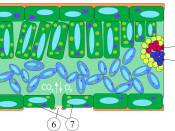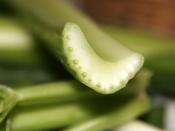Angiosperms, the flowering plants, are the most highly evolved plants and the most dominant in present times. The cells of angiosperms are prearranged into different tissues and organs. The three main organs of flowering plants are roots, stems, and leaves. All the flowering plants are basically divided into two major groups or classes, the Dicots and the Monocots based on a variety of the structural appearance. Most of these features can be identified with the naked eye including, the number of seed leaves, root system, appearance of vascular bundles in stems, vein arrangement in the leaves and the number of floral parts . While monocots and dicots are composed of the same tissues (ground, vascular and dermal tissues) the arrangement of these tissues differs.
The internal structure of the angiosperm root is comparatively simple. In dicots and most monocots, the three tissue systems (dermal, ground and vascular) are arranged in three layers: the epidermis, the cortex, and the vascular cylinder.
The epidermis, which covers the entire surface of the root, absorbs water and minerals from the soil and protects the internal tissues. The epidermal cells of the root are characterized by fine, tubular outgrowths, known as root hairs. Most of the water and minerals that enter the root are absorbed by these root hairs. The second layer of the root is the cortex which occupies by far the greatest volume of the root . The cells of the cortex usually lack functional chloroplasts. Instead, the plastids are specialized for food storage and contain organic compounds such as starch. The many spaces in the cortex allow oxygen from the soil to enter through the epidermal cells. Unlike the rest of the cortex, the cells of the innermost layer, the endodermis, are condensed and have no spaces between them in order...

